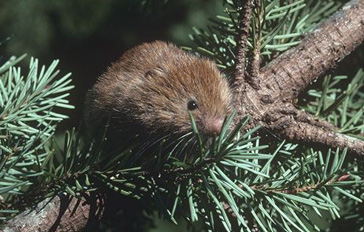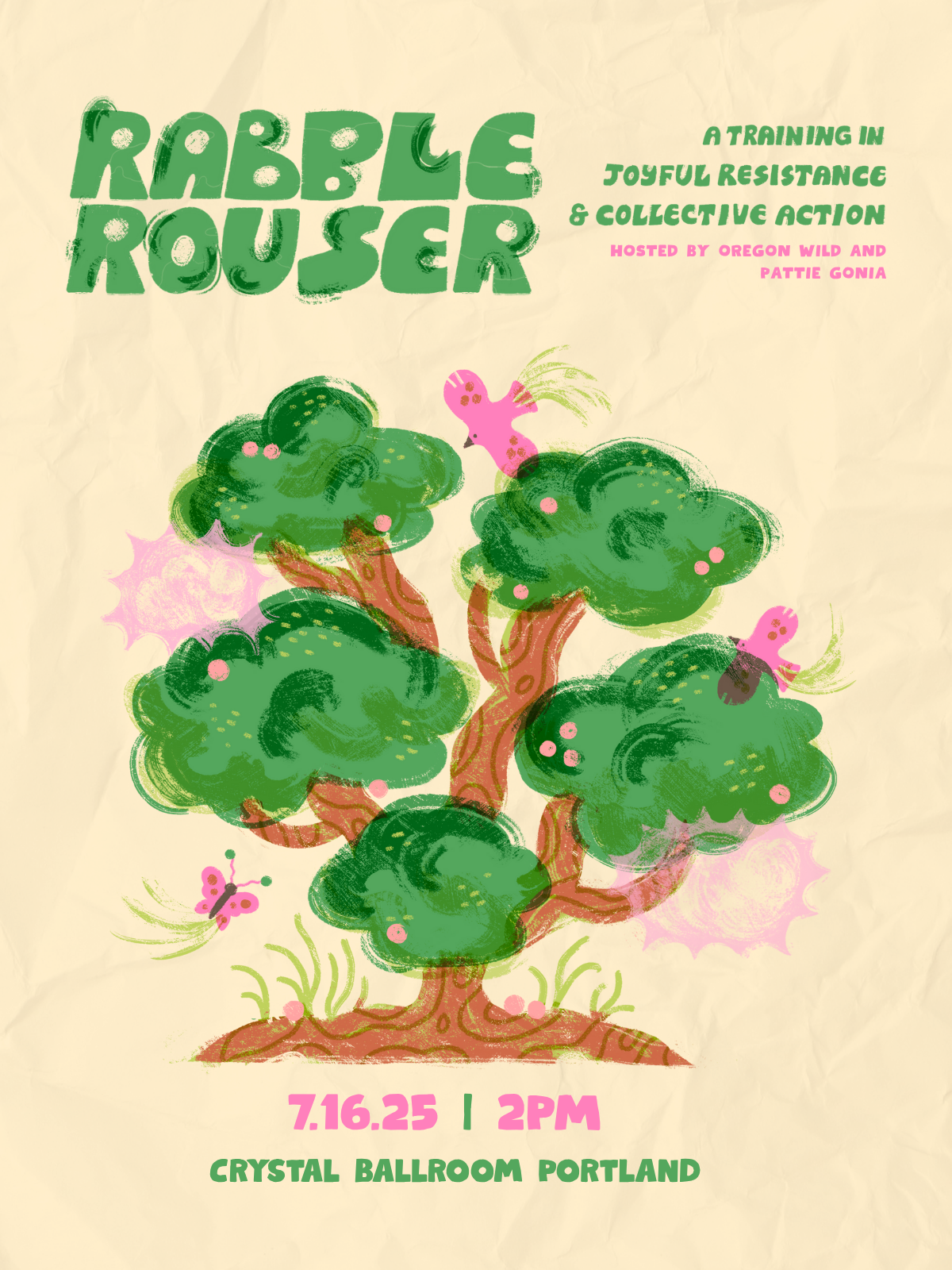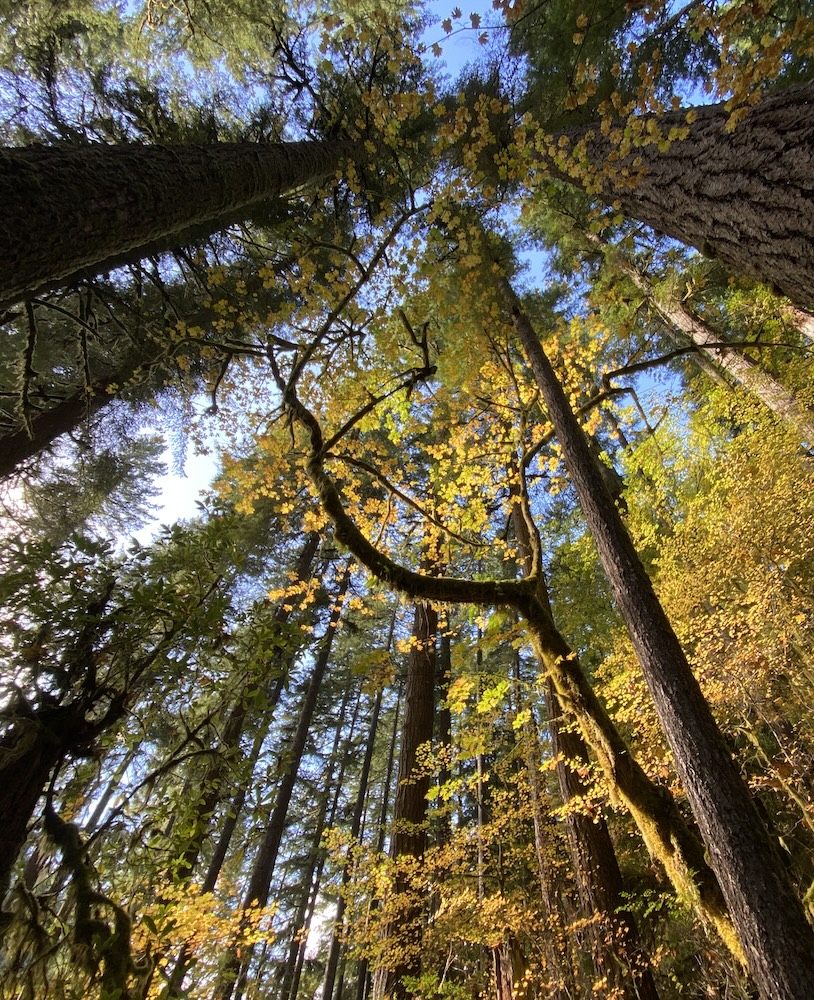| Contact: Ryan Shannon, Center for Biological Diversity Joe Liebezeit, Bird Alliance of Oregon Doug Heiken, Oregon Wild Bethany Cotton, Cascadia Wildlands |
PORTLAND, OR — Conservation groups sued the U.S. Fish and Wildlife Service today for denying protections to the imperiled North Oregon Coast population of red tree voles. The voles spend most of their lives in the upper branches of the Oregon Coast’s mature and old-growth forests.
The Service’s 2024 decision to deny life-saving Endangered Species Act protections to the North Oregon Coast population echoes a similar 2019 Trump administration denial, which also sparked a lawsuit. Those decisions were made despite studies showing that these red tree voles are threatened by habitat loss and fragmentation, largely due to logging and climate change-fueled wildfires.

“Red tree voles have graced Oregon’s coastal old-growth forests for thousands of years, but we could lose them forever if they don’t get Endangered Species Act protections soon,” said Ryan Shannon, a senior attorney in the Center for Biological Diversity’s endangered species program. “It’s time for the Fish and Wildlife Service to follow the science and do the right thing by stepping up for red tree voles.”
Red tree voles build their nests on complex branch and bole structures found in mature and old-growth forests. The North Coast is dominated by a combination of private industrial timberlands and the Tillamook and Clatsop state forests. Decades of rapacious clearcut logging, as well as a series of historic fires known as the Tillamook Burn, have eliminated most of the area’s old forests along with the red tree voles that once called them home. Red tree voles are an essential species in the last remaining old-growth and mature coastal forests in Oregon and protecting them is necessary for ecosystem recovery.
“Red tree voles are a key prey of the threatened northern spotted owl whose population is plummeting,” says Joe Liebezeit, statewide conservation director for Bird Alliance of Oregon. “We need to step up protection of voles to ensure the integrity of forest ecosystem as a whole — including the food web which so much wildlife depends on.”
Remaining North Coast voles are concentrated on federal public lands administered by the U.S. Forest Service and U.S. Bureau of Land Management. Although the Northwest Forest Plan helps protect these remaining small and isolated populations, the long-term survival of the voles depends on improving state and private land forest management and connecting fragmented and isolated red tree vole populations.
Oregon is in the process of adopting a state forest habitat conservation plan that will provide some protection to the vole, but the plan will also allow for continued logging of thousands of acres of potential vole habitat without any surveys to determine if voles are present. There are currently no meaningful protections in private forests.
“The red tree vole is a unique species with adaptations that allow them to live almost their entire lives high in the canopy of mature and old-growth forests,” said Doug Heiken of Oregon Wild. “Its range and habitat are already limited, and without protection for the North Coast population, we could lose red tree voles to irresponsible logging.”
In response to a 2007 Center for Biological Diversity petition, the Service determined in 2011 that protection of the North Oregon Coast population of red tree voles was “warranted but precluded” by other listing priorities. It then moved the voles to a list of candidate species for a decade, repeating its determination that the North Oregon Coast population warranted protection several times before reversing course and denying protections in 2019. A Center lawsuit over the denial resulted in a 2022 settlement directing the Service to reconsider the decision.
“The Fish and Wildlife Service is yet again shirking its duty to this and future generations to prevent the extinction of our most imperiled wildlife species including the red tree vole,” said Bethany Cotton, conservation director for Cascadia Wildlands. “Red tree voles are an important indicator species of forest health; their decline should be a wake-up call to us all to better care for our remaining mature and old-growth forests.”
Bird Alliance of Oregon, Cascadia Wildlands and Oregon Wild are represented by the Center for Biological Diversity in today’s suit.
The Center for Biological Diversity is a national, nonprofit conservation organization with more than 1.8 million members and online activists dedicated to the protection of endangered species and wild places.
Bird Alliance of Oregon was founded in 1902 and works statewide to advocate for Oregon’s wildlife and wild places, and to inspire all people to love and protect birds, wildlife, and the natural environment upon which life depends.
Cascadia Wildlands defends and restores Cascadia’s wild ecosystems in the forests, in the courts, and in the streets.
Oregon Wild works to protect and restore Oregon’s wildlands, wildlife, and waters as an enduring legacy for future generations.






